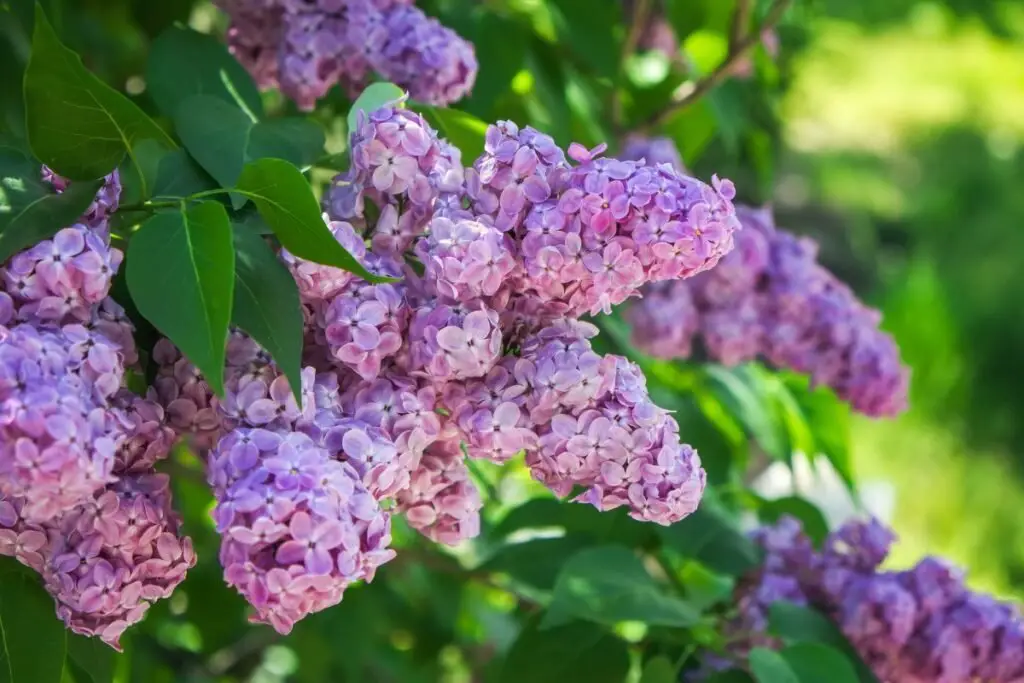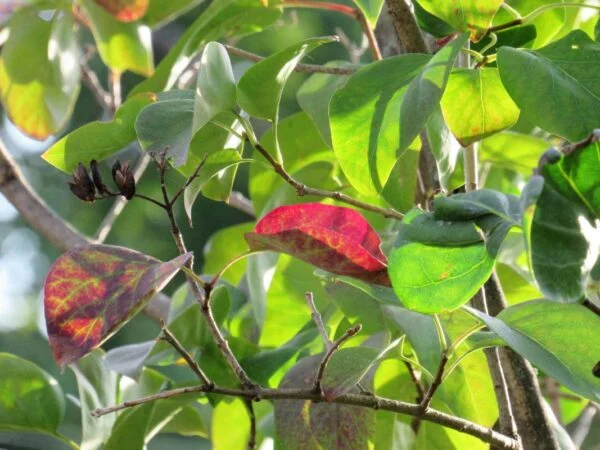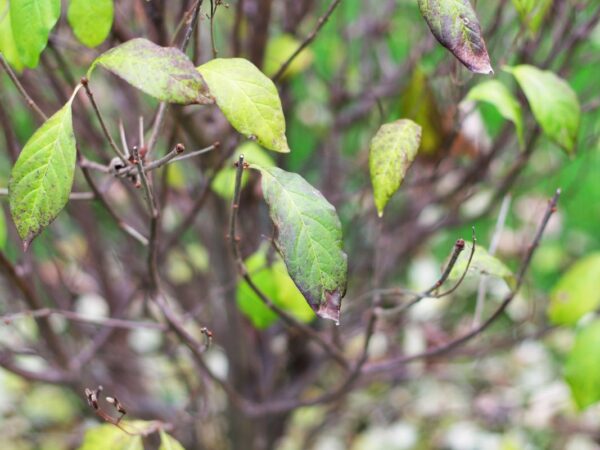
Did you know that the ideal time to trim lilac bushes in Michigan is during the late spring or early summer months? This crucial task plays a significant role in ensuring the health and vitality of your beloved lilacs, promoting optimal growth and blooming.
When it comes to maintaining your lilac bushes in Michigan, timing is key. By understanding the best practices for trimming these fragrant shrubs, you can enhance their beauty and longevity, creating a stunning garden landscape that thrives throughout the seasons. Stay tuned to discover expert tips and guidelines on when to trim lilac bushes in Michigan.
Key Takeaways
Prune lilac bushes in Michigan during late winter or early spring to promote healthy growth and abundant blooms.
Regular maintenance pruning, such as deadheading spent blooms and removing damaged branches, is essential for the overall health of lilac bushes.
Rejuvenation pruning can be done every few years to invigorate older lilac bushes by cutting back one-third of the oldest stems.
Annual pruning benefits include increased flower production, improved air circulation, and overall plant vigor.
Understand the different types of lilac bush pruning, such as thinning cuts, heading cuts, and renewal pruning, to tailor your approach based on the specific needs of the plant.
Remember to prune spring-flowering shrubs like lilacs right after they bloom to avoid cutting off next year's flower buds.
Understanding Pruning
Importance
Pruning lilac bushes at the right time is crucial for preserving their beautiful spring blooms. Proper timing ensures vibrant flowers and healthy growth.
When you prune lilacs correctly, you are protecting the overall health of the plants. Incorrect timing can lead to stunted growth or reduced flowering.
Understanding the significance of correct pruning timing helps in maintaining the aesthetic appeal and vitality of lilac shrubs.
Best Practices
To prune lilac bushes effectively, consider factors like the plant's age and its specific variety. Ensure you have the right tools for the job.
Before pruning, assess the shrub's condition and identify any damaged or diseased branches that need removal. This ensures optimal growth after pruning.
Pruning lilac bushes after flowering is essential as it allows the plant to recover and store energy for the next blooming season.
Timing Overview
The best times to trim lilac bushes in Michigan are immediately after flowering, typically in late spring or early summer. Avoid late fall pruning as it can reduce next year's blooms.
Spring pruning promotes new growth and enhances flowering for the following year. Summer pruning can be done to shape the shrub or remove dead wood.
Avoid pruning in late fall as it can remove buds that would have bloomed in spring, affecting the lilac's beauty in the upcoming season.
Optimal Pruning Time

Late Spring
Late spring is an ideal time to trim lilac bushes in Michigan. The specific considerations during this period include avoiding cutting off next year's flower buds. By pruning in late spring, you can encourage new growth and maintain the plant's shape. This practice also helps in increasing air circulation, reducing disease risks, and enhancing overall vigor.
During late spring, trimming lilac bushes promotes better blooming for the following year. It allows the plants to focus their energy on producing new shoots and flowers rather than seed development. This results in lusher blooms and a more vibrant display of colors come springtime. Late spring pruning also aids in maintaining the lilac bushes' health and longevity by removing dead or diseased branches.
Early Summer
Pruning lilac bushes in early summer offers several advantages. It is a time when the plants are actively growing, making it easier to identify and remove unhealthy or overcrowded branches. Early summer pruning also helps in shaping the shrubs, creating a more aesthetically pleasing appearance for your garden. By trimming during this period, you can stimulate new growth, leading to denser foliage and more abundant flowering.
The impact of early summer pruning on lilac bushes' vigor is significant. Removing spent blooms encourages the plant to redirect its energy towards producing new flowers and leaves. This process promotes stronger stems, better branching structure, and overall plant health. Shaping the shrubs during early summer ensures that they maintain a compact form, preventing them from becoming leggy or overgrown.
Late Summer Considerations
Late summer pruning plays a crucial role in maintaining the health and vitality of lilac bushes. It allows you to remove any remaining faded blooms or damaged branches before the onset of fall. By tidying up the plants at this time, you create space for fresh growth and prevent disease from spreading. Late summer pruning also encourages the bushes to allocate resources towards root development, ensuring their winter hardiness.
Pruning in late summer can have a direct impact on next year's flowering season. By trimming back overgrown branches or shaping the shrubs, you promote better airflow within the plant canopy, reducing moisture buildup and fungal issues. Specific techniques for late summer pruning involve making clean cuts just above a set of healthy buds to encourage proper healing and regrowth.
Maintenance Pruning Techniques
Correct Methods
Pruning lilac bushes is crucial for their optimal growth. To achieve this, it's essential to follow the correct techniques. Firstly, explore the various methods available for shaping and rejuvenating the plants. Secondly, ensure you understand the significance of using proper cutting angles to promote healthy growth.
Tools Required
For effective pruning of lilac bushes, having the right tools is key. Discover the essential tools needed for this task. Learn about specific tools that can make the pruning process easier and more efficient. Remember, using sharp and clean tools is vital for making precise cuts without causing damage to the plant.
Safety Measures
When engaging in pruning activities, safety should be a top priority. Explore the necessary safety measures to follow when trimming lilac bushes. Learn how to protect yourself from potential injuries that may occur during the process. Understand the importance of wearing appropriate gear such as gloves and goggles for safe and effective pruning practices.
Rejuvenation Pruning Methods
When to Rejuvenate
Overgrown lilac bushes in Michigan may need renovation pruning when they exhibit signs of decline. Rejuvenation pruning becomes necessary when the shrubs have become too dense or stopped flowering. The benefits of this method include promoting new growth and restoring the plant's overall health. By rejuvenating neglected lilac bushes, you can revitalize their appearance and encourage better blooming seasons.
To determine the right time for renovation pruning, look for indicators like sparse blooms, woody and unproductive branches, or an overall lackluster appearance in your lilac bushes. Once these signs are evident, it is time to consider rejuvenation to improve the plant's vigor and longevity. The process involves cutting back a significant portion of the plant to stimulate fresh growth and enhance its vitality.
When embarking on the journey of renovation pruning, follow specific steps to ensure successful rejuvenation. Start by removing one-third of the oldest stems at ground level to allow new shoots to emerge. Subsequently, thin out any crowded areas to improve air circulation within the bush. Finally, shape the remaining branches evenly to promote balanced growth throughout the shrub.
Step-by-Step Guide
For an effective rejuvenation process, begin by assessing your lilac bushes' condition and identifying areas that require attention. Remove any dead or diseased branches first before proceeding with further pruning steps. Next, target overgrown sections by cutting them back gradually to avoid shock to the plant.
After initial assessments and selective branch removal, focus on shaping the lilac bush by trimming back unruly growth while maintaining its natural form. Pay close attention to each cut made during renovation pruning as precision is crucial for encouraging proper regrowth patterns. Finish by applying a layer of mulch around the base of the shrub to retain moisture and protect newly exposed roots.
Following these steps diligently will not only enhance the aesthetic appeal of your lilac bushes but also contribute significantly to their overall health and longevity. By practicing regular maintenance techniques alongside renovation pruning, you can ensure vibrant blooms year after year from your revitalized shrubs.
Annual Pruning Benefits
Health and Vigor
Proper pruning directly impacts the health and vigor of lilac bushes. By trimming correctly, you enhance the plant's overall well-being. This process encourages new growth, strengthens branches, and boosts the shrub's ability to resist diseases. The timing of pruning plays a crucial role in ensuring that lilacs remain robust throughout their lifecycle.
Pruning is essential for promoting a thriving lilac bush. It stimulates the development of new shoots and flowers, leading to a more vibrant appearance. Regular maintenance pruning helps maintain an optimal shape and size for the shrub, ensuring it remains healthy and vigorous. Removing dead or diseased branches through proper pruning enhances air circulation within the plant, reducing the risk of fungal infections.
Key factors such as timing, technique, and frequency influence the health and vitality of lilac shrubs. Pruning during the dormant season allows the plant to focus its energy on root development. Proper cuts at a 45-degree angle help prevent water accumulation on cut surfaces, minimizing the risk of rot. By understanding these factors, gardeners can ensure that their lilacs thrive year after year.
Abundant Blooms
Pruning practices significantly impact the abundance of blooms on lilac bushes. Strategic trimming helps regulate flower production by stimulating new growth and enhancing blooming potential. Timing is critical when it comes to promoting abundant blooms on lilacs. Pruning immediately after flowering allows ample time for new buds to form before winter sets in.
The connection between pruning timing and bloom quantity is undeniable. Early spring pruning encourages vigorous growth and ensures a bountiful display of flowers later in the season. Trimming off spent blossoms also prevents seed formation, redirecting energy towards producing more blooms. By following these simple yet effective pruning techniques, gardeners can enjoy a spectacular floral show from their lilac bushes.
To promote a profusion of blooms on lilac bushes, gardeners must adopt strategic pruning methods tailored to each specific variety. Understanding the growth habits and flowering patterns of different lilac species is crucial for maximizing bloom production. By incorporating proper pruning techniques into their gardening routine, enthusiasts can create stunning displays of colorful blossoms year after year.
Longevity
Proper pruning techniques play a vital role in extending the longevity of lilac bushes. Regular maintenance pruning helps remove dead or damaged branches, preventing disease spread and promoting overall plant health. By eliminating weak growth points through selective pruning, gardeners can encourage strong structural development in lilac shrubs.
Pruning serves as a key factor in preserving the health and lifespan of lilac plants by promoting robust growth patterns and reducing stress on older branches. Properly pruned lilacs are better equipped to withstand environmental challenges such as harsh weather conditions or pest infestations. Gardeners who prioritize consistent pruning practices can ensure that their beloved lilac bushes thrive for many years to come.
Discovering how to prune effectively contributes to the long-term survival of lilac shrubs by maintaining their structural integrity and vitality over time. By adhering to best practices in timing, technique, and frequency, gardeners can establish a strong foundation for healthy growth in their lilac bushes.
Types of Lilac Bush Pruning
Maintenance
Lilac bushes require regular maintenance to thrive, including tasks like watering, fertilizing, and pruning. Pruning is crucial for maintaining the health and appearance of lilacs by removing dead or diseased branches. This practice also encourages new growth and enhances flowering.
To ensure the overall well-being of your lilac bushes, make maintenance a priority. Regular pruning not only promotes better air circulation but also reduces the risk of pest infestations. By incorporating these tasks into your routine, you can safeguard the vitality of your plants for years to come.
Rejuvenation
Rejuvenation pruning is a technique used to breathe new life into older lilac bushes that have become overgrown or neglected. This process involves cutting back the shrub drastically to stimulate fresh growth. The benefits of rejuvenation include improved vigor and rejuvenated blooming.
When rejuvenating lilacs, it's essential to prune them back significantly, often even down to 1-2 feet from the ground. This drastic measure may seem harsh, but it allows the plant to redirect its energy towards producing healthy new shoots. By following proper techniques, you can revive even the most tired-looking lilac bushes.
Annual Cutting Back
Annual cutting back plays a vital role in maintaining the size and shape of lilac bushes. By pruning them on a regular basis, you can prevent overcrowding and promote optimal growth. This practice also helps remove dead wood and encourages the development of strong branches.
For annual cutting back, focus on removing spent flowers immediately after blooming to prevent seed formation. prune any damaged or crossing branches to maintain a healthy structure. By following these steps annually, you can keep your lilac bushes looking tidy and vibrant throughout the growing season.
Pruning Spring Flowering Shrubs
Lilac Specifics
Lilac bushes, known for their fragrant blooms, require specific care when it comes to pruning. Understanding the unique characteristics of lilacs is crucial for successful maintenance. Different varieties of lilacs may have varying pruning requirements, so it's essential to be aware of these distinctions.
When pruning lilac bushes, it's important to consider factors such as the age of the shrub, its growth pattern, and the desired shape. Tailoring your pruning techniques based on these individual needs will help promote healthy growth and abundant flowering. By identifying these specific considerations, you can ensure that your lilac bushes thrive throughout the year.
Photo Credits
In any article featuring images, proper attribution is key to acknowledging the creative contributions of photographers or image repositories. Providing photo credits not only adds transparency but also respects the efforts of those behind the visual content. It's essential to give credit where credit is due for all images used in the blog post.
Acknowledging the sources of images used in an article demonstrates a commitment to ethical practices and upholds standards of integrity in content creation. By ensuring that photographers or image repositories are properly credited, you uphold a sense of professionalism and respect within the online community.
Late Summer/Fall Considerations
To Prune or Not
Pruning lilac bushes in late summer or fall depends on various factors. Understanding when to prune is crucial for maintaining plant health. Avoid pruning if the lilac bush has already set buds for the next spring bloom. Pruning at this stage can lead to a loss of next year's flowers. Look for signs like wilted leaves, dead branches, or overgrown areas before deciding to prune.
Preparing for Winter
As winter approaches in Michigan, it is essential to prepare lilac bushes for the cold months ahead. Explore protective measures such as mulching around the base of the shrub to insulate roots from freezing temperatures. Trim any dead or diseased branches to prevent further damage during winter storms. Consider wrapping burlap around the shrub to shield it from harsh winds and snow accumulation.
Year-Round Lilac Care
Watering
Proper watering is crucial for maintaining healthy lilac bushes. Lilac shrubs require consistent moisture levels throughout the year. Signs of overwatering include wilting leaves, while underwatering leads to drooping and dryness.
Fertilizing
Fertilizing plays a vital role in promoting growth and blooming in lilac bushes. Different types of fertilizers can be used, such as balanced formulas or those specifically designed for flowering plants. Applying fertilizer in early spring before new growth appears is ideal.
Mulching
Mulching offers insulation and nourishment to lilac bushes by retaining moisture and reducing weed growth. Organic mulches like wood chips or compost are excellent choices. Proper mulching techniques involve spreading a layer around the base of the shrub without touching the trunk.
Summary
Understanding the best time to trim lilac bushes in Michigan is essential for their health and blooming. By following optimal pruning practices and techniques, you can ensure your lilac bushes thrive year after year. From maintenance pruning to rejuvenation methods, taking care of your shrubs will result in healthier growth and more abundant blossoms. Remember to consider the specific type of lilac bush you have and tailor your pruning approach accordingly. Whether it's spring flowering shrubs or late summer/fall considerations, proper care throughout the year is key to vibrant lilac bushes.
Take action now by applying these pruning tips to your lilac bushes and watch them flourish. Share your newfound knowledge with other gardening enthusiasts to spread the joy of beautifully blooming shrubs. Your dedication to proper pruning will not only benefit your lilacs but also enhance the overall beauty of your garden landscape.
Frequently Asked Questions
When is the best time to trim lilac bushes in Michigan?
Late Summer/Fall Considerations
The optimal time to trim lilac bushes in Michigan is after they bloom in late spring or early summer. Avoid pruning in late fall as it may affect next year's blooms.
[Special requests] Make sure to prune right after flowering to promote new growth and avoid cutting off next season's flower buds.
How often should I prune my lilac bushes?
Annual Pruning Benefits
Lilac bushes benefit from annual pruning to maintain their shape and promote healthy growth. Regular pruning also helps remove dead wood and encourages blooming.
Prune your lilac bushes at least once a year, ideally right after they finish blooming.
What are the different types of lilac bush pruning methods?
Types of Lilac Bush Pruning
Common lilac bush pruning methods include maintenance pruning for shaping, rejuvenation pruning for older plants, and seasonal pruning for optimal growth and blooming.
Choose the appropriate pruning method based on the age and condition of your lilac bushes for best results.
Can I trim my lilac bushes during the winter months?
Year-Round Lilac Care
It is not recommended to trim lilac bushes during the winter months, especially in Michigan, as this can expose them to harsh weather conditions and potential damage.
Wait until late spring or early summer to prune your lilac bushes when the weather is milder and more suitable for plant growth.
Image Source: Paid image from CANVA





